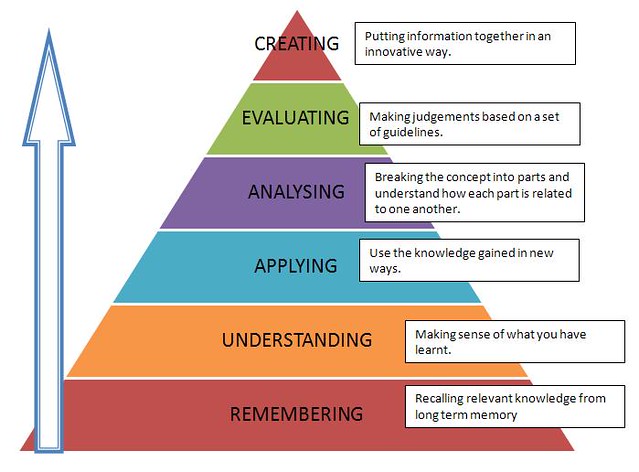In a previous blog post, I wrote about the different types of cognitive load. Cognitive load is the metaphorical weight that the learner has to bear when processing new information. In this post, I will write about how content writers should avoid cognitive load in their TEFL materials.
No Decorative or Supplemental Images/Graphics
Avoid unnecessary images or graphics which do not add pedagogical value to the exercise you are designing. The educational theorist Richard Mayer once formulated the principles of learning design in his book entitled “Multimedia Learning:” He made the point that: “People learn better when extraneous material is excluded rather than included.” Mayer asserted that there are two separate channels (auditory and visual) that are used for processing information. His dual-channel assumption supports the idea that people learn better from both words and images, rather than words alone. A helpful image adds context, scaffolding learning, whereas an unnecessary only increases extraneous cognitive load.
Don’t Use Narration and On-Screen Text at the Same Time
Mayer warns us against duplicating audio and on-screen text. Listening and looking at pictures is ideal, but having to read and listen is probably going to overwhelm the learner’s visual channel, especially if images are also included. An even worse problem is when text is placed on top of an image, which is huge barrier for people with reading difficulties.
Don’t Separate Graphics and Text
Avoid splitting the learner’s attention so they constantly have to switch their attention from one element to another. This is known as Mayer’s “Spatial Contiguity Principle”. Mayer said states that: “Students learn better when corresponding words and pictures are presented near rather than far from each other on the page or screen.” Applying this principle helps reduce the cognitive load caused by switching attention between different elements.
Break Complex Learning Tasks into Manageable Chunks
Optimize the amount of information you are presenting to the learner. You need to sequence it in easy to consume chunks. Don’t have 20 sentences in one exercise when 6 sentences would be enough. It may be necessary to break down a more complex exercise into several smaller chunks, while maintaining meaningful links between each element. We chunk material in order to reduce the intrinsic load of the whole. For example, a long complex text could be broken into parts, each with a separate task. However, don’t be tempted to change the focus.
Germane Load is Good Cognitive Load.
Strategies that increase germane load help learners integrate new information and create complex schemas. Encourage reflection and connect new content with learner’s past experiences. Provide real-life examples and explanations to aid in the creation of new schemas.
Bloom’s Taxonomy
When you are designing a learning cycle, it is important to use Bloom’s Taxonomy as a guide to optimize cognitive load. Start with lower-level thinking skills and gradually increase the complexity of tasks. Provide opportunities for interactive learning and active participation.

Use Educational Scaffolding
If you want to design a good learning cycle, it is necessary to create learning steps in which the scaffolding supplied by the teacher is gradually reduced step by step. One possible learning architecture could be:
Acquisition – Guided Application – Independent Application – Activation
It does not make sense to introduce a language structure, and then change the focus, switching to an entirely unrelated task. Avoid suddenly changing the topic before the learning cycle has properly unfolded. It is important to have a golden thread that runs through the sequence of exercises.
Get the CEFR Skill Level Right
Make sure that the objectives of the lesson materials match the CEFR skill level of the students. It is very important to check the target language with a tool such as the Oxford Text Checker to make sure that it is level appropriate. Materials must be within the learner’s Zone of Proximate Development. The ZPD refers to the gap or distance between a learner’s current level of ability or knowledge and their potential level of development. The theory was first introduced by the psychologist Lev Vygotsky
Use a Clear Rubric
A very good way to reduce intrinsic load is to use easy to understand instructions. If learners cannot understand an instruction, then they will suffer from cognitive overload before they even start the actual language learning task. Just as complex exercises sometimes have to be broken into chunks, long complex instructions must be broken down into easy-to-understand steps.
By implementing these strategies, you can create English language training materials that minimize cognitive load and enhance learning outcomes for your students.
Check List:
- Is there an opportunity for the learner to reflect on previous experiences?
- Are the instructions concise and easy to understand?
- Do the images add context to the task? Is there added pedagogical value?
- Is narration, images and on-screen text combined?
- Are elements separated? Do the learners have to switch between slides?
- Are the exercises too long and complex? Do I have to many sentences in each exercise?
- Has the focus suddenly changed in the middle of learning cycle?
- Is the CEFR skill level of the materials appropriate for the target learners?
- Has the learning cycle started with lower-level thinking skills and proceeded to more complex tasks?
- Is the scaffolding gradually being reduced?
- Does the learning cycle have a well-planned learning architecture?
Image Sources:
Banner picture from Pexels on Pixabay
“blooms-taxonomy-1k4snjn” by nist6dh is licensed under CC BY-SA 2.0.
Further reading (all external links):
Principles of Multimedia Learning – Center for Teaching and Learning | Wiley Education Services
https://edu.rsc.org/feature/reduce-cognitive-load-to-build-knowledge/3010223.article
https://elearningindustry.com/avoid-cognitive-overload-in-employee-training-programs
https://www.thinkific.com/blog/cognitive-load-theory-explained/

No responses yet